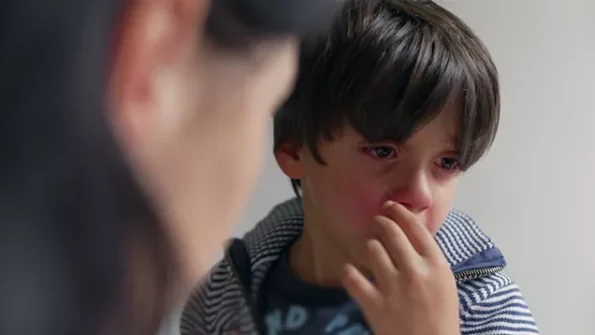
Therapeutic Fostering: Rethinking Parenting Styles for Children in Care
Many of the parenting approaches we’re familiar with cannot be applied when fostering children. Learn more about therapeutic parenting, with effective strategies to use as a foster parent.
If you have your own children, you may use particular parenting approaches to manage their behaviour and encourage them to achieve. Whether it’s rewarding them for doing well at school or taking away treats such as screen time if they don’t help around the house, you probably have a few tried and tested methods that you rely on.
These parenting approaches usually come from a place of love and a desire to help your child learn valuable life lessons, such as cause and effect, taking responsibility for their actions, and self-discipline. However, when you foster a child, these familiar methods may not have the desired effect and could unintentionally trigger painful memories or re-traumatise them.
That’s why, at ISP, we are committed to trauma-informed therapeutic parenting and aim to model this actively. This will help you rethink parenting styles for children in care and apply therapeutic parenting approaches. It will also help you understand what a child is trying to communicate so that, over time, you can help them find alternative ways to communicate a need or emotion. By doing so, you can instead build trust, strengthen your connection, and support the child’s healing from trauma.
Parenting your own children vs children in care
When parenting your own children, attachment begins at birth. You form a bond during the early years of their life, and this connection develops into a secure relationship. They are confident in your love for them and know that, when the chips are down, they can turn to you. This provides a sense of stability, trust, and a positive view of relationships. It also means that when you are supporting them to make positive choices or enforcing boundaries, they are more likely to accept your guidance and learn from the experience.
However, for children in care, who may have experienced abuse, neglect, or other adverse childhood experiences, traditional parenting methods can sometimes do more harm than good. Trauma can have a profound impact on a child’s development – it physically alters the brain, leaving them in a constant state of flight, fight, or freeze. It can shape the way they see the world, making it difficult for them to trust others, regulate their emotions, and respond to discipline in the way a securely attached child may do.
These children need patient, safe, and secure foster parents who can help them process their thoughts and emotions, rather than simply correcting their behaviour.

Why Supernanny is wrong
You may have heard of Supernanny, the popular prime time show that hit our screens in the early 2000s. During each episode, Jo Frost would run to the rescue of parents who were struggling with their children’s behaviour, offering guidance and parenting techniques to help them build a happier home.
With a strong focus on discipline and boundaries, Supernanny often criticised parents for letting their children ‘rule the house’, stepping in to scold children when she felt that the parents weren’t ‘taking control of the situation.’
She encouraged parents to use time-outs and an authoritarian tone while pressuring children into apologising for their actions. The idea was that the child would associate their actions with the consequences and change their behaviour.
For many children, this type of parenting gets results because they have a secure relationship with their parents. They know that even when their parents are upset with them, they are still loved and safe. They are also at a stage in their development where they understand cause and effect, can control their impulses, and regulate their emotions.
For children living with trauma, however, the story is very different. Some children may be behind their peers developmentally due to their past experiences, which can make it difficult for them to understand cause and effect, manage impulses, or regulate their emotions. Instead, a punishment like a time-out could re-traumatise them and trigger painful memories of feeling abandoned or ignored. It may also reinforce deep-rooted beliefs that they are to blame for their circumstances, leading to another layer of shame, guilt, and worthlessness.
Foster parents, therefore, need to move away from traditional parenting styles and adopt a trauma-informed approach – this is where therapeutic fostering comes in.
Adopting a therapeutic approach
When a child moves into care, their whole world is turned upside down. They have no choice but to leave everything they’ve ever known behind and begin a new journey in an unfamiliar place. This can be a frightening and overwhelming time for children, so they need foster parents who can provide stability, understanding, and patience to help them rebuild their lives and heal from their trauma. This is what therapeutic fostering is all about, and below, we explore how foster parents can adopt a healing approach.
Nurturing a sense of stability and safety
Therapeutic foster parents are consistent in their approach, offering children the reassurance of routine and a safe space for them to express their emotions. It’s about thinking, feeling, and communicating in a way that helps children feel safe. One method that may be used is PACE parenting. Some young people may have missed the stage in their development where they learn to regulate their emotions, meaning they need help to do so effectively.
PACE involves interacting with a young person as though they are an infant to build a safe and trusting connection. It’s about demonstrating to the child in your care that their thoughts and feelings are safe with you and that they are loved, valued, and accepted for who they are, regardless of their behaviour.
It’s also about taking time to observe your young person’s experiences and modelling to them how to manage difficult emotions and sit with pain and challenges. This teaches children how to do the same, which can be therapeutic in itself, especially when you reassure them that you can hear and understand how difficult these experiences may be for them.
Connection over discipline
Therapeutic fostering always considers the inner world of a child, recognising that their behaviour is often a way for them to communicate thoughts and feelings that they can’t verbally express. It’s about tuning into a child’s emotions to understand what’s really going on.
Instead of using time-outs, a therapeutic foster parent may use time-ins. Time-ins allow you to support a child through their emotions rather than leaving them to manage feelings they may not fully understand on their own. It’s about connecting with the child and helping them regulate their emotions, rather than punishing them for expressing them.
At times, our own parenting may be challenged because things may be easier or more familiar our way. However, resisting the urge to react is always a good way to manage. Instead, think and reflect, wonder and be curious about what you’ve just witnessed. When you’re out and about, it may feel easier to reprimand or correct and show others we are dealing with the situation, but this may be counterproductive. It could be very shame-inducing and may impact the trust you and your young person have built.
Understanding triggers
Trauma is unique to each young person, and therapeutic foster parents use curiosity to identify and understand triggers. Triggers can be sights, sounds, tastes, touches, or smells that make a child feel unsafe, uneasy or remind them of painful memories. These triggers can cause a fight, flight or freeze response.
For example, if the child in your care displays strong emotions every time you go to a supermarket, this environment may be a trigger for them. You can help them through their survival response by using grounding techniques, such as deep breathing exercises and sensory activities, to bring them back to the here and now.
Once they are in a calmer and more neutral state, you can talk to them about what happened and how it made them feel. Not only will this help you therapeutically support them through their survival responses, but it will also give you a greater understanding of their triggers so you can develop strategies together to manage them in the future.

Seeking support
Adopting a therapeutic approach means collaborating with other fostering professionals to ensure that you and the child in your care receive the support you need. At ISP, you have access to 24/7 support and a network of in-house professionals, including social workers, therapists, fostering advisors, and advisory teachers, who can offer further therapeutic support.
Each child at ISP is assessed by a therapist and, if needed, they receive a tailored therapy programme designed to help them process their experiences and support their healing journey. Our reflective practice groups also allow you to share any challenges you face and receive advice and guidance from other foster parents who have had similar experiences.
Remember you’re only human
Transitioning from traditional parenting styles to therapeutic parenting takes time, and even the most experienced foster parents may sometimes react to a child’s behaviour in a way they later regret. Remember, you’re only human, and what matters most is the way you repair your relationship afterwards.
Once the moment has passed and everyone is calm, role model accountability by acknowledging your reaction, apologising, and talking openly with the child in your care about why you responded the way you did.
By reconnecting in this way, you demonstrate that you care about the child’s feelings and relationships can be repaired. This will also teach them valuable life skills, such as conflict resolution, that will help them build healthy relationships in the future.
Learn about trauma…

Secure Base Model Explained
Explore the benefits of the Secure Base model and how it helps children in care feel safe and secure.

Trauma and attachment
Explore how a child’s relationship with primary caregivers and those crucial early interactions can shape their attachment style.

Healing from trauma
Explore the strategies and therapeutic perspectives you need to help children recover from trauma.
